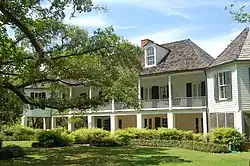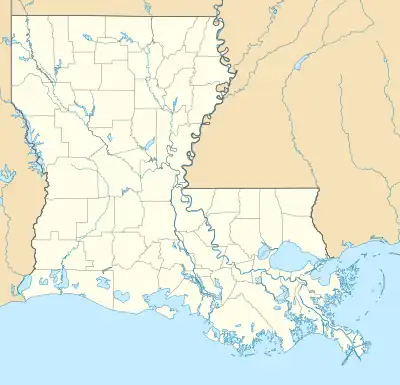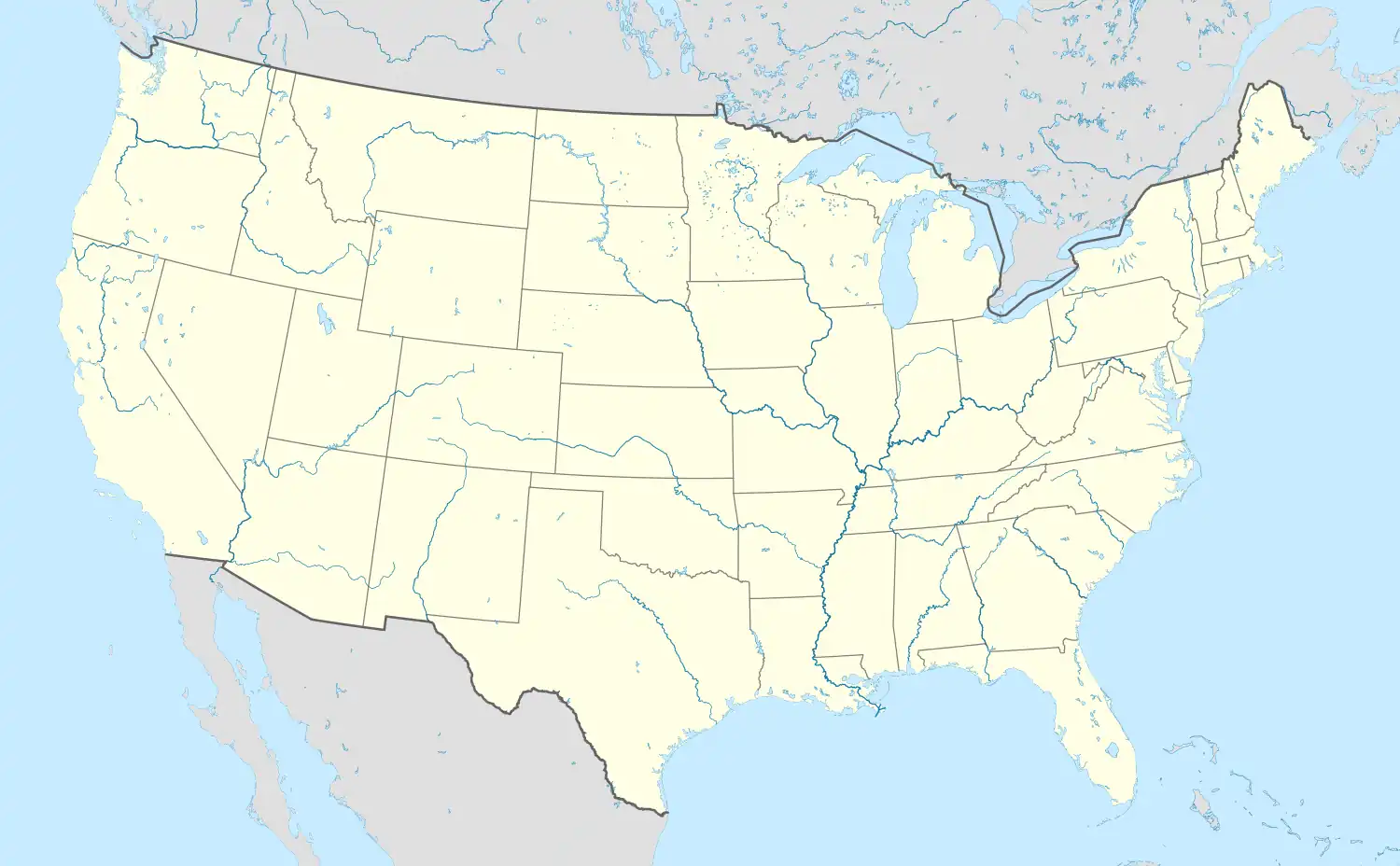Isle Brevelle | |
|---|---|
Community | |
 | |
 Isle Brevelle Location in Louisiana, United States  Isle Brevelle Isle Brevelle (the United States) | |
| Coordinates: 31°38′37″N 093°01′43″W / 31.64361°N 93.02861°W | |
| Country | United States |
| State | Louisiana |
| Parish | Natchitoches Parish |
| Founded by | Anne des Cadeaux and Jean Baptiste Brevelle II |
| Named for | Jean Baptiste Brevelle II |
| Time zone | UTC-6 (Central (CST)) |
| • Summer (DST) | UTC-5 (CDT) |
.jpg.webp)
Isle Brevelle is an ethnically and culturally diverse community, which began as a Native American and Louisiana Creole settlement and is located in Natchitoches Parish, Louisiana. For many years this area was known as Côte Joyeuse (English: Joyous Coast). It is considered the birthplace of Creole culture and remains the epicenter of Creole art and literature blending European (predominantly French and Spanish), African, and Native American cultures. It is home to the Cane River Creole National Historical Park and part of the Louisiana African American Heritage Trail.[1]
Location
Located in the Natchitoches Parish in Louisiana, in approximately 18,000 acres of land between the Cane River and Bayou Brevelle (near Montrose).[2][3] Two major highways in Isle Brevelle include LA 119 and LA 484.[3]
History
Isle Brevelle is named after Jean Baptiste Brevelle, Jr. (French: Jean Baptiste Brevel, Jr.), its earliest settler and the 18th-century explorer and soldier of the Natchitoches Militia. [4] He is the son of Jean Baptiste Brevelle, a Parisian-born trader and explorer, and his Adai Caddo (French: Natao) Indian wife, Anne Marie des Cadeaux. The baptism of Jean Baptiste Brevelle, Jr. is recorded on May 20, 1736 in the oldest Catholic Registry in the Louisiana colony.[5] Jean Baptiste Brevelle Jr. was granted the island by David Pain, the subdelegate at Natchitoches in 1765 for his service to the French and Spanish crowns as a Caddo Indian translator and explorer of Arkansas, Oklahoma, Texas, and New Mexico.[6]
The island is a narrow strip of land some thirty miles in length with three- to four-mile breadth located south of Natchitoches, Louisiana. It is delineated and split by waterways to include the Cane River, Red River, Old River, and Bayou Brevelle (named after Jean Baptiste Brevel). Isle Brevelle was considered "the richest cotton-growing portion of the south". Father Yves-Marie LeConiniat, a priest from France, referred to it as an "earthly paradise".[7][8]
As the colony changed hands from France to Spain, the spelling of the Brevel surname changed to Brevelle. Records kept by the Spanish Crown (and later by the United States of America after the Louisiana Purchase) changed the names of the Brevelle family members to reflect the new spelling: Jean Baptiste Brevelle. The Brevelle Plantation grew to become one of the largest plantations in the South producing cotton, tobacco, indigo, lumber, bear grease, cattle, and food crops. [9] [10]
The Louisiana Creole community is made of descendants of French and Spanish colonials, Africans, Anglo-Americans, and Native Americans of the Caddo Confederacy ( Natchitoches, Adai). [11] [12]
Nicolas Augustin Metoyer (1768–1856), was the son of Marie Thérèse Coincoin and Claude Thomas Pierre Métoyer, and he has been considered the "grandfather" of the community of Isle Brevelle.[13] He was born into slavery and remained in bondage (initially to Don Manuel Antonio de Soto y Bermúdez and wife Marie des Nieges de St. Denis DeSoto)[14] until 1792, at the age of 24.[13] Around this same time his mother, Marie Thérèse Coincoin was also freed from enslavement and they, as a family started collecting local land, which eventually amassed to 6,000 acres.[13] At the center of this collected land was Isle Brevelle.[13] During this era and in this location, mulatto people lived similarly to white Southern planters, in large mansions with expensive furniture, and in some cases they held their own slaves.[13] Nicolas Augustin Metoyer's home no longer stands, but the church he built, St. Augustine Parish still does.[13]
Notable places


- Badin-Roque House
- Cane River Lake
- Cherokee Plantation (Natchez, Louisiana)
- Coincoin–Prudhomme House (or Maison de Marie Thérèse)
- Oakland Plantation (Natchitoches Parish, Louisiana)
- Magnolia Plantation (Derry, Louisiana)
- Melrose Plantation
- Bayou Brevelle
- St. Augustine Catholic Church and Cemetery (Natchez, Louisiana)
- St. Augustine Parish
Notable people
- Clementine Hunter (c. 1887–1988), self-taught folk artist, she lived at the Melrose Plantation within Isle Brevelle.[15]
- Kellyn LaCour-Conant, restoration ecologist[16]
- Marie Thérèse Coincoin (1742–1816), a planter, former slave turned slave owner, and businesswoman.
- Anne des Cadeaux (unknown–1754), former Native American slave, mother of Jean Baptiste Brevelle II, and buried on Isle Brevelle at the Brevelle Plantation.
- Billie Stroud (1919–2010), self-taught folk artist, used Isle Brevelle as one subject of her work and spent time there.[17]
- Robert Brevelle (born 1977), entrepreneur, venture capitalist and professor, is a lineal descendant of Isle Brevelle founder Jean Baptiste Brevelle II and Anne des Cadeaux. He has hosted seminars and lectured on Isle Brevelle and Creole History. Being one of the First Families of Louisiana as designated by the Genealogical and Historical Society, he is of French and Caddo (Adai) Indian descent with blood relatives in the Natchitoches and Tunica-Biloxi tribes. His father was raised on an Indian reservation. Robert is the registered agent and a tribal councilman of the Adai Caddo Indian Nation of Louisiana. A lifelong advocate for promoting diversity and inclusion in the workplace for minorities, women and veterans, he has served on the Veterans Job Mission, chairman of Diversity Councils at Raytheon and Texas Instruments, and various scholarship committees. He has been recognized for his service having received awards from the Small Business Administration, Veterans Administration, NASA, and was recently named a Top 100 Investor that Supports Veteran Owned Businesses. [18][19]
See also
- Fort St. Jean Baptiste State Historic Site
- Basilica of the Immaculate Conception (Natchitoches, Louisiana)
- Brevelle Lake
- John Sibley (doctor)
- Louisiana Purchase
- Great Raft
- Adai language
- Caddo
- Cane River (film)
- Adai Caddo Indians of Louisiana
- National Register of Historic Places listings in Natchitoches Parish, Louisiana
References
- ↑ Dowdy, Verdis (5 October 1975). "Isle Brevelle and Festival". Newspapers.com. The Town Talk. p. 7. Retrieved 2021-12-17.
- ↑ Gregory, H. F. "Isle Brevelle". Louisiana Regional Folklife Program, Northwestern State University.
- 1 2 "Cane River Creole Community". Louisiana Regional Folklife Program, Northwestern State University.
- ↑ Mills, Gary (1977). The Forgotten People: Cane River's Creoles of Color. LSU Press. p. 50-67. ISBN 0807137138.
- ↑ Mills, Elizabeth (2007). Natchitoches. Abstracts of the Catholic Church Registers of the French and Spanish Post of St. Jean Baptiste des Natchitoches in Louisiana 1729-1803. Heritage Books Inc. p. 4-8. ISBN 978-0931069109.
- ↑ Mills, Gary (1977). The Forgotten People: Cane River's Creoles of Color. LSU Press. p. 50-67. ISBN 0807137138.
- ↑ McCants, Sister Dorothea Olga (1970). They Came to Louisiana: Letters of a Catholic Mission. LSU Press. p. 122-125. ISBN 0807109037.
- ↑ Mills, Gary (1977). The Forgotten People: Cane River's Creoles of Color. LSU Press. p. 51. ISBN 0807137138.
- ↑ Vets, Tony (2015). Descendants of Jean Baptiste Brevel: Soldier of Fort St. Jean Baptiste at Natchitoches. CreateSpace Independent Publishing Platform. p. 6-89. ISBN 9781508913740.
- ↑ "History Brevelle Conservation Trust". 13 April 2020. Retrieved 2022-05-10.
- ↑ "Cane River Creole Community". Retrieved 2022-05-11.
- ↑ "History Brevelle Conservation Trust". 13 April 2020. Retrieved 2022-05-10.
- 1 2 3 4 5 6 Dowdy, Verdis (21 September 1975). "Discovering Cenla, Grandpere, a Church, and a Portrait". Newspapers.com. The Town Talk. p. 43. Retrieved 2021-06-27.
- ↑ Chrysler-Stacy, Elizabeth M. (1994). "Marie des Nieges de St. Denis DeSoto: Mother of De Soto Parish". Louisiana History: The Journal of the Louisiana Historical Association. 35 (3): 350–354. ISSN 0024-6816. JSTOR 4233129.
- ↑ Catlin, Roger. "Self-Taught Artist Clementine Hunter Painted the Bold Hues of Southern Life". Smithsonian Magazine. Retrieved 2021-06-28.
- ↑ "Kellyn LaCour-Conant, MSc Tales from the Trail: Adventures in Restoration Ecology – McWane Science Center". Retrieved 2023-01-08.
- ↑ Register, James (6 January 1974). "Isle Brevelle Produces a New Primitive". Newspapers.com. The Town Talk. p. 29. Retrieved 2021-06-27.
- ↑ Whitney, Amber (September 2023). "Robert Brevelle CEO". thetop100magazine.com. p. 64. Retrieved 2021-12-18.
- ↑ Vets, Tony (2015). Descendants of Jean Baptiste Brevel: Soldier of Fort St. Jean Baptiste at Natchitoches. Patriot Publishing. ISBN 9781508913740.
